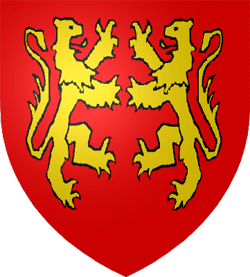





2022
9th Annual Cyprus Conference
on Medieval, Renaissance
and Early Modern Studies
Academic Organising Committee: Dr Stella Achilleos (University of Cyprus); Dr Jane Chick (University of East Anglia, UK); Prof. James Fitzmaurice (Northern Arizona University, USA/Univerity of Sheffield, UK); Prof. Lisa Hopkins (Sheffield Hallam University, UK); Dr Sarah James (University of Kent, UK); Dr Richard Maguire (University of East Anglia, UK); Dr Michael Paraskos FRSA (City and Guilds of London Art School and Imperial College London, UK); Dr Laurence Publicover (University of Bristol, UK)
Academic Board: As above, plus: ; Dr Nicholas Coureas (Cyprus Research Centre, Cyprus); Dr Rita Severis (CVAR, Cyprus); Prof. Astrid Swenson (Bath Spa University, UK); and, Dr Violetta Trofimova (St Petersburg University, Russia)
General Co-ordinator: Dr Michael Paraskos FRSA (Imperial College London, UK)
Othello's Island 2022

* * * * * * * * * * * * * * * * * * * * * * * * * * * * * * * * * * * * * * * * * * *
Title. Double click me.
Title. Double click me.
Othello's Island 2015
at the Severis Foundation • Nicosia • Cyprus
Speaker: Dr Frank Burnet MBE (University of West of England, UK)
Title: "Evoking Eternity: Have we had a close encounter with the mathematical geniuses of 15th-century Iran?"
Abstract:
The most common shapes of tiles used to cover flat surfaces are either four or six sided and the patterns they create are periodic in that one part of the pattern can be super-imposed upon another. In 1977 Roger Penrose showed that two specially shaped four sided tiles, named respectively the kite and the dart could, if correctly aligned, create a non-periodic and theoretically infinitely variable coverage of any plane.
Computer simulation subsequently revealed that the ratio of kite to dart tiles converged on the golden ratio as the area covered increased. In 2006, Peter Lu, a physicist at Harvard who knew of Penrose’s work noticed that the decorative tiling of the Darb-i Imam Mosque in Isfahan, Iran also appeared to contain such an infinitely non-repeating pattern using five different tiles which he collectively named Girih tiles. Lu went on to show that the outlines of all five could be created using combinations of Penrose tiles. So it seems very likely that the tiling of the Darb-i Imam mosque was created through a collaboration between craftsmen and mathematicians, the latter being 500 years ahead of their time. The goal of this paper will be use this extraordinary insight into the mathematical sophistication of the Arab world in the mid 15th century to explore the relationship between mathematics and theology in Islam and its role in creating the Arab dominance of the spheres of science and technology from AD 850 to 1500.
* * * * * * * * * * * * * * * * * * * * * * * * * * *
Working in partnership:

